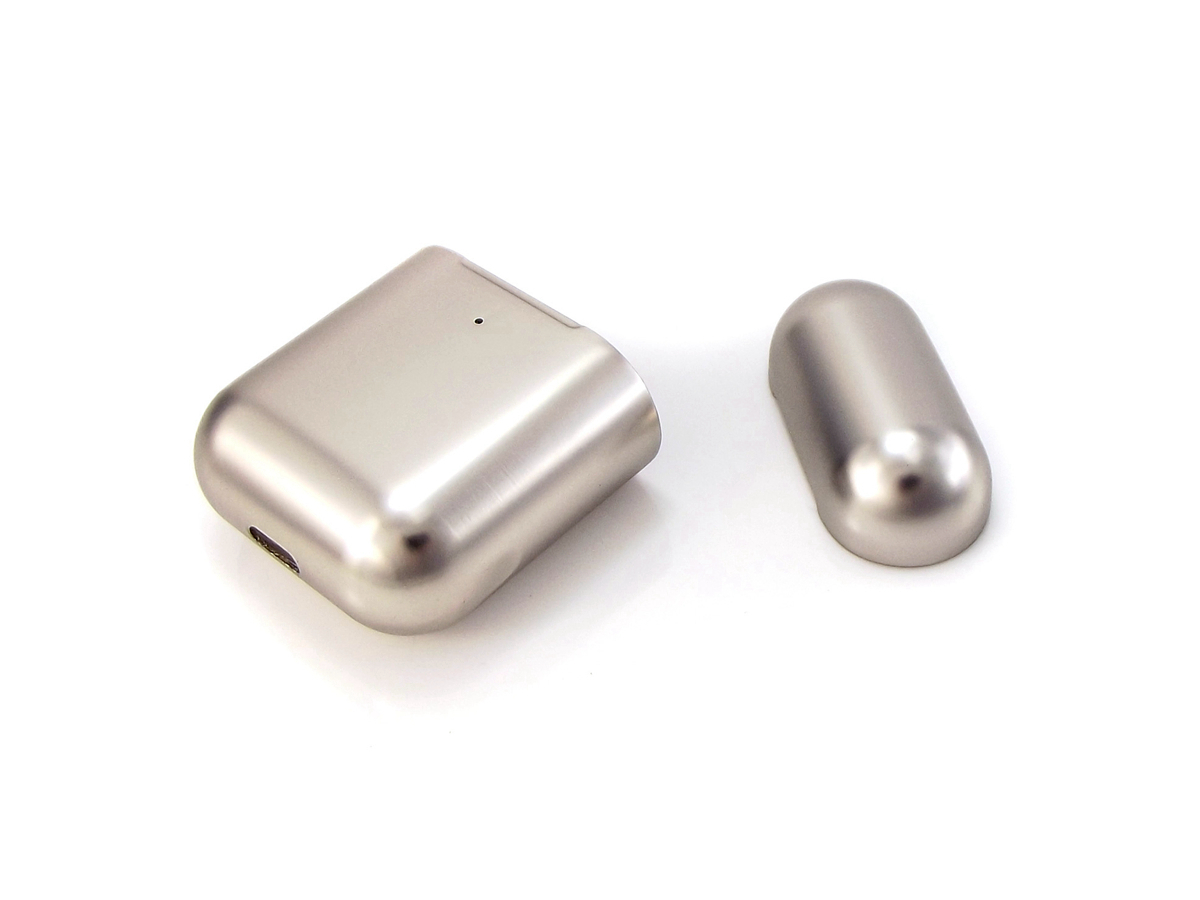Zinc Die Casting: Precision Solutions for Durable Earphone Metal Casing
Introduction: Precision Meets Durability
Zinc die casting revolutionizes audio device manufacturing by combining the precision of Zamak die casting with advanced engineering. This process achieves ±0.05mm dimensional accuracy on intricate earphone casings, supporting ultra-thin walls as narrow as 0.3mm. Utilizing a hot-chamber process, manufacturers achieve cycle times under 30 seconds—ideal for high-volume production of lightweight, corrosion-resistant components.
Alloys like ZA-8 provide exceptional thermal stability up to 120°C, ensuring reliability in wireless charging applications. With tensile strengths exceeding 280 MPa, zinc die-cast casings withstand 2m drops while reducing weight by 40% compared to stainless steel. This technology enables seamless integration of antenna structures and IP67-rated waterproofing, meeting rigorous demands for modern wearable electronics.
Precision Manufacturing for Audio Components
Step 1: High-Speed Mold Preparation CNC-machined H13 steel molds with 0.005mm surface finish are preheated to 180°C, optimized for Zamak alloys to prevent thermal shock.
Step 2: Injection & Solidification Molten zinc at 425°C is injected at 35 m/s, filling 0.3mm-thin cavities within 0.15 seconds. Vacuum-assisted hot-chamber casting reduces porosity by 90%.
Step 3: Automated Post-Processing Robotic arms trim flash with ±0.02mm repeatability, while coordinate measuring machines (CMMs) verify compliance with IEC 60529 waterproofing standards.
Material Intelligence: Advanced Alloys for Acoustic Excellence
Alloy | Key Properties | Applications | Competitive Edge |
|---|---|---|---|
85 HRB hardness Ra 0.8μm surface finish | Entry-level earphones Bluetooth speaker grilles | 40% lower cost vs aluminum 0.5mm minimum wall thickness | |
332 MPa tensile strength 1.2% elongation | Sports earphones Gaming headset hinges | Survives 50+ 2m drops MIL-STD-810H certified | |
0.8μΩ·m resistivity 120°C thermal stability | Wireless charging lids Smartwatch antenna housings | 22% lower EMI interference 5G signal loss <0.3dB | |
99.9% purity ISO 10993 biocompatibility | Medical hearing aids Surgical tool housings | Passes 168hr salt spray tests FDA-compliant surfaces | |
400 MPa yield strength 1.5% Cu content | Automotive door handles Industrial connectors | 30% higher wear resistance Operates at -40°C to 150°C |
Expanded Applications:
Medical: Zamak 7 enables MRI-safe hearing aid shells with zero magnetic interference.
Automotive: ACuZinc5 withstands 200,000+ door handle cycles in -30°C environments.
IoT Devices: ZA-8 ensures stable WiFi 6 signal transmission in smart home sensors.
Surface Engineering: Technical Enhancements for Audio Devices
Electropolishing
Function: Electropolishing removes micro-burrs, improves hygiene, and enhances conductivity.
Properties: Achieves Ra 0.2μm finish, increases corrosion resistance by 50%
Considerations: Requires precise current density control (10-40 A/dm²)
Applications: Medical-grade earphone contacts
PVD Coating
Function: PVD coatings enhance wear resistance 3x and achieve multi-colors or unique properties such as conductivity, insulation, or corrosion resistance.
Properties: 1-5μm thickness, 1,500Hv hardness, 200+ color options
Considerations: Avoid sharp edges (<0.3mm radii) to prevent coating delamination
Applications: Luxury headphone logos, touch-sensitive controls
Black Oxide
Function: Black oxide improves corrosion resistance and reduces light reflection for stealth aesthetics.
Properties: 0.5-2.5μm layer, 80+ hrs salt spray resistance (ASTM B117)
Considerations: Not suitable for high-wear sliding surfaces
Applications: Tactical-grade earbud casings
Teflon Coating
Function: Teflon coating prevents bacterial adhesion and reduces friction for smooth user interaction.
Properties: 10-50μm thickness, 0.04 friction coefficient, FDA/EU 10/2011 compliant
Considerations: Limited to <260°C operating temperatures
Applications: Hygiene-critical hearing aid surfaces
Powder Coating
Function: Powder coating adds durable, eco-friendly layers with customizable textures and colors.
Properties: 50-150μm thickness, 5x chip resistance vs liquid paint
Considerations: Requires zinc substrate chromating pretreatment
Applications: Premium over-ear headphone frames
Competitive Edge: Why Zinc Outperforms
Process | Cost/Unit | Min Thickness | Cycle Time | Best For |
|---|---|---|---|---|
Zinc Die Casting | $0.80 | 0.3mm | 25s | Thin-wall audio gear |
Plastic Molding | $0.35 | 0.8mm | 45s | Basic enclosures |
CNC Machining | $5.20 | 1.2mm | 15m | Prototypes |
Production Excellence: Solving Audio-Specific Challenges
Challenge | Technical Solution |
|---|---|
Micro-Cracks in Hinges | Vacuum-assisted casting reduces defects by 85% through optimized pressure control |
Antenna Signal Loss | ZA-8 alloy minimizes EMI interference to <0.3dB with controlled resistivity |
Surface Imperfections | Robotic polishing ensures Class-A finishes (±0.01mm uniformity) |
Mold Wear in Thin Walls | H13 tool steel with nitride coating extends mold life to 500,000+ cycles |
Thermal Deformation | Precision cooling channels maintain mold temperature within ±2°C |
Industry Applications: Sound Innovation
True Wireless Stereo (TWS): Drop-proof hinges for earbud cases, ultra-thin charging port bezels, sweat-resistant touch controls
Gaming Headsets: RGB-compatible PVD finishes, heat-dissipating structural frames, modular microphone mounts
Medical Devices: Biocompatible Zamak 7 surgical tool grips, sterilizable hearing aid housings, MRI-safe implant casings
Case Studies:
FAQs
How does Zamak 7 meet medical biocompatibility standards?
Can ZA-8 alloy support 6GHz WiFi frequencies?
What alloy is best for sub-zero temperature applications?
How thin can ACuZinc5 be cast reliably?
Does electropolishing affect RF antenna performance?

